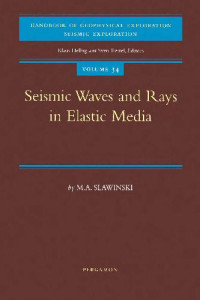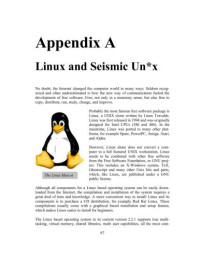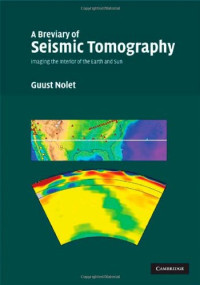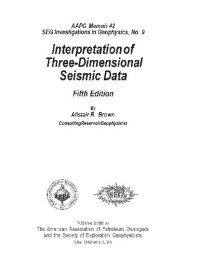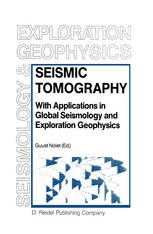
Theory of Seismic Imaging
Scales J.
The focus of this book is the imaging of reflection seismic data from controlled sources. At the frequencies typical of such experiments, the Earth is, to a first approximation, a vertically stratified medium. These stratifications have resulted from the slow, constant deposition of sediments, sands, ash, and so on. Due to compaction, erosion, change of sea level, and many other factors, the geologic, and hence elastic, character of these layers varies with depth and age. One has only to look at an exposed sedimentary cross section to be impressed by the fact that these changes can occur over such short distances that the properties themselves are effectively discontinuous relative to the seismic wavelength. These layers can vary in thickness from less than a meter to many hundreds of meters. As a result, when the Earth's surface is excited with some source of seismic energy and the response recorded on seismometers, we will see a complicated zoo of elastic wave types: reflections from the discontinuities in material properties, multiple reflections within the layers, guided waves, interface waves which propagate along the boundary between two different layers, surface waves which are exponentially attenuated with depth, waves which are refracted by continuous changes in material properties, and others. The character of these seismic waves allows seismologists to make inferences about the nature of the subsurface geology.
ШҜШұШ¬ЩҮ (ЩӮШ§Ш·ЫҢШәЩҲШұЫҢ(:
Ъ©Ш§Щ„:
1994
ЪҳШЁЩҮ:
english
ШөЩҒШӯЩҮ:
226
ЩҒШ§ЫҢЩ„:
PS, 9.59 MB
IPFS:
,
english, 1994
 Amazon
Amazon  Barnes & Noble
Barnes & Noble  Bookshop.org
Bookshop.org  File converter
File converter ШҜ Щ„ЩјЩҲЩҶ ЩҶЩҲШұЫҗ ЩҶШЁЫҢШ¬Ыҗ
ШҜ Щ„ЩјЩҲЩҶ ЩҶЩҲШұЫҗ ЩҶШЁЫҢШ¬Ыҗ More benefits
More benefits 